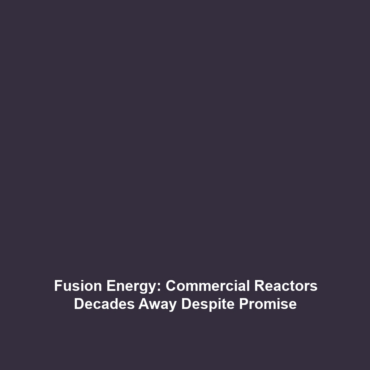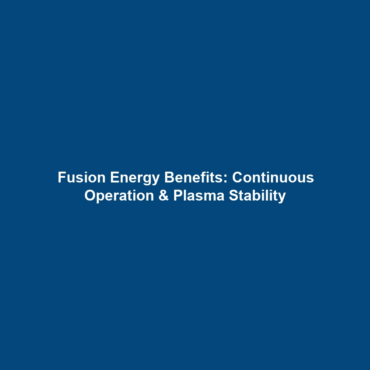<>
Commercialization Timeline of Fusion Energy: Challenges and Prospects
Introduction: The commercialization of fusion energy stands as a formidable ambition within the broader context of sustainable energy solutions. With promising potential to provide nearly limitless clean energy, the journey towards functional commercial reactors faces substantial hurdles that may delay realization for decades. Understanding the commercialization timeline of fusion energy is essential as the world increasingly seeks viable alternatives to fossil fuels. This article elucidates the critical technical challenges and the path forward for harnessing the power of fusion.
Key Concepts of Fusion Energy
Fusion energy, a process that powers the sun, involves combining light atomic nuclei to form heavier nuclei, releasing vast amounts of energy. Major principles related to the commercialization timeline include:
- Thermonuclear Fusion: The primary reaction used in experimental reactors, primarily involving isotopes of hydrogen.
- Plasma Physics: Understanding the behavior of plasma is crucial for sustaining fusion reactions.
- Magnetic Confinement: Techniques like tokamaks and stellarators are explored to keep the hot plasma stable during reactions.
- Inertial Confinement: Involves compressing fusion fuel using lasers, another leading method under investigation.
Applications and Real-World Uses of Fusion Energy
The potential applications of fusion energy are extensive and transformative. Key examples include:
- Electricity Generation: Fusion could provide a backbone for electricity supply, significantly reducing greenhouse gas emissions.
- Hydrogen Production: Fusion reactors may be able to generate hydrogen through high-temperature processes, supporting clean fuel initiatives.
- Medical Applications: Research stemming from fusion technologies has led to advancements in various medical imaging and treatment technologies.
Current Challenges in Fusion Energy Research
Despite its promise, the path toward the commercialization of fusion energy is littered with challenges that require comprehensive solutions:
- Technical Complexity: Building a reactor that can sustain a steady-state fusion reaction is immensely complicated and costly.
- Safety Concerns: Ensuring robust safety measures to manage risks associated with high-energy plasma is paramount.
- Material Degradation: The materials used in reactors must withstand extreme conditions without significant deterioration.
- Funding and Investment: Securing consistent funding and public interest over long timelines can be challenging.
Future Research and Innovations in Fusion Energy
Research into fusion energy continues to evolve rapidly, with promising innovations on the horizon:
- Advanced Materials: Developing new materials that can endure the intense conditions inside fusion reactors.
- AI and Machine Learning: Utilizing AI to optimize plasma control and stability significantly enhances reactor performance.
- International Collaboration: Projects like ITER represent global efforts to pool resources and knowledge for fusion research.
Conclusion
In summary, the commercialization timeline of fusion energy encompasses significant technical challenges and potential breakthroughs. Although we are still likely decades away from functional commercial reactors, understanding the journey is crucial for stakeholders in the energy sector. Continued research and innovation could pave the way for a sustainable energy future. For more insights on energy technologies and their impacts, explore our related articles on renewable energy solutions and advancements in energy storage technologies.

